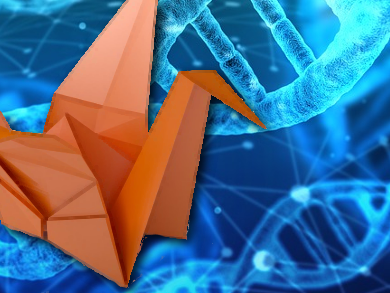DNA origami allows folding DNA into tiny structures. It is one of the methods using the base-pairing properties that bond two strands of DNA into the double helix, to build 2- and 3-dimensional structures at the nanometer scale with applications in material science, nanoelectronics, photonics, and the biomedical arena. The process involves the folding of a long single DNA strand supported by multiple short DNA segments from 20–60 nucleotides in length, known as staple strands. The staple strands act to pin the folded scaffold structure in place by base-pairing at pre-selected locations. This design phase is complex and highly labor-intensive, particularly the design of the staple strands which is typically performed manually. This limits the broad application of the method.
Hyungmin Jun, Massachusetts Institute of Technology (MIT), Cambridge, MA, USA, Fei Zhang, Arizona State University, Tempe, AZ, USA, and colleagues have developed a method to fully automate the process of generating 2-D DNA structures. They have designed the computer program PERDIX (Programmed Eulerian Routing for DNA Design using X-overs) that allows users to translate any free-form drawing, sketched in any computer drawing program, into a 2-D, nanoscale structure made of DNA. PERDIX is simple and user-friendly. It designs all DNA staple sequences needed to fold any free-form 2D scaffolded DNA origami wireframe object
To achieve that, the team has developed a mathematical approach that routs the single-stranded scaffolds through the entire structure to form the correct shape. The designer of a given 2D structure makes a simple freehand drawing of just the outer border of the desired shape. The internal structure is determined automatically by the algorithm. Alternatively, the exact internal geometry is provided that then is converted into DX edges in the final origami object.
The shapes, which range from 10 to 100 nm in size, can remain stable for weeks or months, suspended in a buffer solution.
- Autonomously designed free-form 2D DNA origami,
Hyungmin Jun, Fei Zhang, Tyson Shepherd, Sakul Ratanalert, Xiaodong Qi, Hao Yan, Mark Bathe,
Science Advances 2019, 5(1), eaav0655.
https://doi.org/10.1126/sciadv.aav0655



